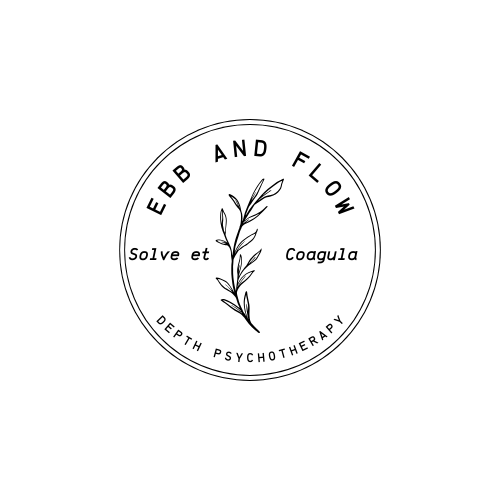Embodied Dreamwork Practices for Personal Growth and Transformation Part II
This is Part II of a two-part series. Click here for part I.
In this iteration, I explore the different techniques of working with dream images: allowing them to lead you through the land, embodying their actions and emotions, asking for their direction in imagined conversation, and ritualizing their messages and insights.
Permitting Dream Figures to Lead the Way
With the image of the meth-addicted young black man strong on my mind, we gathered for the second day, recollecting our dreams in intuitively grouped triads. In the early afternoon, we embarked upon the land with the intention to wander. I brought the mystery pup into my imagination to lead me. He bolted straight for the red rock canyons which had caught my eye as upon my arrival. When we came to forks in the path, I would step back and allow the mystery pup to choose the way. I delighted in having him near my side, reaching down to scratch his neck every so often, laughing as he would suddenly lunge towards unsuspecting lizards. The pretend play of childhood carries deeper wisdom than our adult minds like to grant them, much like the wisdom of dreams.

The pup had a keen sense of where I needed to be. He would grow excited near certain places, his labored breathing turning to heavy grunts endemic to the breed. These spots correspond to power spots, places containing intense spiritual energy and beings endemic to the land (see R.J. Stewarts Power Within the Land ). One of these places was a grouping of boulders atop a red mountain known as Everett. I sat and waited. I contemplated a question I brought with me: how should I proceed with my clinical psychology program? Should I complete it? Should I take the master’s at the end of this year and develop my own practice? Should I abandon it now and go on a different path? An image came to me of my mother in cap, gown, and hood, one she had sent me the week prior. A question arose. Are you happy now? The question was for her and for me – I know that the credential will not grant me authority , it must come from within. I reflected on how my identity had become wrapped around intellectual achievement, why oh why must I have pursued the PsyD and not an LMFT or LPC? Anger welled within me.
When I brought this experience to the group later that day, one of the facilitators asked if a memory or emotion arose in response to the images or the anger that emerged on the land. Indeed, a difficult memory came up, one in which I had been terribly humiliated and frightened and had blamed myself for it. I was six years old. A new feeling arose in response to this memory – one I had never been able to experience. I thought I had dropped into the terror before, but it was a ruse. I felt disgust. Disgust? How could I be disgusted at what had happened? I must have been so bad, so intolerable to have found myself in the situation that I was in, that I had to blame myself for it. I had to blame Mikey, the child I was. It was the safer alternative to something being wrong with mother. “What did you do? What could you have done that made it to where we had to suffer that?” I split him off and disowned him. The facilitators instructed me to leave a gift somewhere on the land, something so that Mikey would know where to find me; where we could make a reconciliation.

As we embodied our dream figures, made their actions our actions, their emotions our emotions, I knew that they young black man that had confronted me on the streets was none other than my own disowned child. He was Mikey come to let me know what he was owed. He had grown up with no nurturing, generative adult there to guide him. I gathered a wildflower bouquet and tied it to a tree by a river so he would know where to find me. Once the bouquet was tied, he found me. I collapsed into a ball, my hands around my knees. He let his anger and hurt be known. “I needed you, and you abandoned me! I had no one to tell me it was okay. I had no one to show me how to grow up!” “I know, buddy. I’m so sorry. We weren’t equipped to deal with that then. But I’m here now, and I know that I can give you the love and attention that you need.” I hugged him and stroked his hair, promised him we would get his favorite meal when the intensive was over.
This reconciliation is vital. The dream image that emerges is not a mere fiction or artifact of REM sleep – it is a visceral and honest component of our own psyche. By limiting the information I tried to pull from the dream and by relating to it directly , I was permitting the dream to do its work on me. What’s more, I embodied Mikey as he appeared in the dream, and I performed a ritualized act (making the bouquet and tying it near the river) to further bring the dream into my waking world.
Daytime Dreaming
Night dreams are uninterrupted by the light of the ego. Like the stars that penetrate the night sky, our dreams elucidate something beyond us, and though the roar of the daytime sun blinds us to them, they are all still there. If we exercise means to dim the light of our ego, dreams can be allowed to permeate our living awareness. This can be done through a variety of means, the most reliable of which are psychedelic drugs such as psilocybin mushrooms, LSD, mescaline, ayahuasca, et cetera. Like the state of sleep, these substances permit unimpeded access to the dreaming side, the shamanic vision. This is just one method, however. Meditation practice is useful for this, as well as breathwork, intuitive movement, prolonged immersion in wild places without the influence of technology (particularly ego-bolstering technologies such as social media and television), vision fasting, and physical exertion/exhaustion. Any combination of these will powerfully mediate our underlying dream consciousness.
“Like the stars that penetrate the night sky, our dreams give rise to something beyond us, and though the roar of the daytime sun blinds us to them, they are all still there.”
The method of choice for this intensive was the combination of a steady drum beat with intuitive movement. This requires that one be able to tap into those parts of themselves. Those not yet ready may question the validity or purpose of such an exercise or have no idea as to what they should do. For about thirty minutes, I writhed and twisted on the ground of an alcove where humans had slept, dreamt, prayed, fed, and danced for tens of thousands of years. My hair was covered in dirt. As my body began to relax and rest, I felt a strong compulsion to cover my face with dirt. Most of it slid off but some accumulated in eye sockets held softly closed. I lost awareness of my body at this point. I forgot that I was sitting in a red rock alcove with dirt in my eyes. I was in the wigwam of a powerful enchantress who had first taken the form of my partner. Before long she appeared in her true guise, dressed in leather clothes and wearing the skull of a many-antlered deer. I asked her to reveal her true face. She lifted the deer skull to reveal her own gigantic human skull, filled with knowledge, the eyes on fire and multi-colored. She lowered her mask once more. She offered me a nebulous crystal rhomboid, a sphere of pure darkness at its center. As it entered my belly I felt a surge of energy through my throat, heart, and testicles. It was an offering of power, power I had disowned to keep me safe in my society and my family. I asked her when I should return to the site of the bouquet I had left for my wounded child. She instructed me to return after dinner that evening.
My flashlight failed as I approached the spot. Darkness overtook me. I was afraid. I sat by the tree where the bouquet was tied and listened to the river. I climbed back up to the wash and set my phone light up so that it projected my shadow onto the trees. Removing all of my clothes, I breathed deep into the cold Colorado night. I squatted into a warrior stance, ready for anything. I bent until my genitals became clearly outlined in the silhouette, and rising up with sacral power I yelled like I have never yelled before, the primal scream of the berserker, war cry of the damned and disparaged. I embodied this warrior in the Heart of the World ceremony the following evening, rallying my fellow human animals to take up their implements of war and dance a new world into being.
Coming Back, Wrapping Up
This intensive encompassed more than the living mysteries of night dreams. It revealed to us the many ways in which Spirit speaks, how to bring Its messages into our bodies, out of our heads, and engage with it in the broader field of experience. Uniting our conscious and unconscious minds, bridging the gap of the opposites, does something to our experience that approaches the ineffable. So often we are caught up in the self -defeating desire to improve ourselves, to “improve” the thing that wishes to be improved, rather than open to a wider wisdom that permeates every fiber of our being. This is what Plotkin means when he instructs us to let the dream do its work on us. I hope that from this article series, the reader intuits the value of opening up to the work the dream wishes us to do, that the more we can do this, the more it will allow its infinite river to flow into our being and be the humans that we were born to be.
If you would like help on this journey, I offer depth psychotherapy utilizing the methods described here as well as others. I can assist in deepening dream states, working with the images that arise there, and acting as a guide on the path to Soul. Inquire within for your free consultation.


